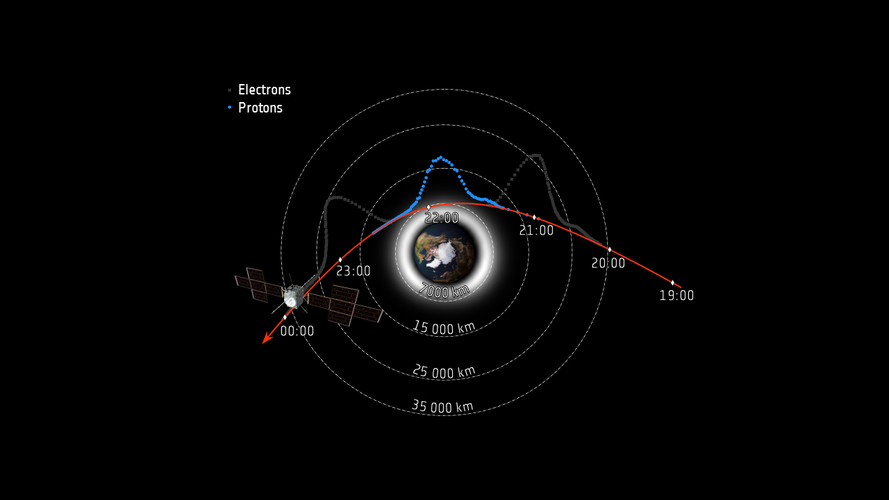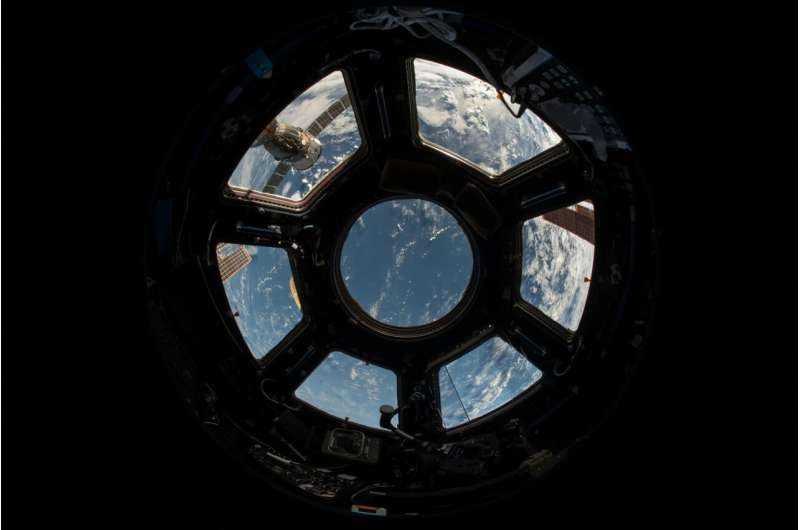Orbit Secures $6 Million Contract for Advanced Naval Satellite Communication Systems in Asia
Tuesday, 03 September 2024 19:49 Orbit Communication Systems Ltd. (TASE: ORBI), a key global supplier of maritime and airborne SATCOM terminals, tracking ground station solutions, and mission-critical airborne audio management systems, has secured a $6 million contract with a major Asian integrator. The contract involves the supply of advanced satellite communication systems for new naval military platforms, with deliveries sch
Orbit Communication Systems Ltd. (TASE: ORBI), a key global supplier of maritime and airborne SATCOM terminals, tracking ground station solutions, and mission-critical airborne audio management systems, has secured a $6 million contract with a major Asian integrator. The contract involves the supply of advanced satellite communication systems for new naval military platforms, with deliveries sch SecAF completes strategic visit to strengthen ties with 7 European Nations
Tuesday, 03 September 2024 19:49 Secretary of the Air Force Frank Kendall concluded a week-long trip aimed at reinforcing international partnerships and supporting Airmen and Guardians aligned with NATO's goals in the U.S. European Command area of responsibility from Aug. 19 - 25, 2024.
During the visit, Kendall engaged with senior leaders in Belgium, Sweden, Lithuania, Latvia, Finland, Estonia, and Poland, reaffirming th
Secretary of the Air Force Frank Kendall concluded a week-long trip aimed at reinforcing international partnerships and supporting Airmen and Guardians aligned with NATO's goals in the U.S. European Command area of responsibility from Aug. 19 - 25, 2024.
During the visit, Kendall engaged with senior leaders in Belgium, Sweden, Lithuania, Latvia, Finland, Estonia, and Poland, reaffirming th USSPACECOM reflects on five years of Spacepower and future goals
Tuesday, 03 September 2024 19:49 U.S. Space Command (USSPACECOM) marked its fifth anniversary on August 29 with a review of its achievements and strategic objectives for the future. Senior leaders gathered for a panel discussion during a special edition of the Mitchell Institute's Schriever Spacepower Series in Colorado Springs on August 28, reflecting on the command's progress since its inception in 2019.
Gen. Stephen Wh
U.S. Space Command (USSPACECOM) marked its fifth anniversary on August 29 with a review of its achievements and strategic objectives for the future. Senior leaders gathered for a panel discussion during a special edition of the Mitchell Institute's Schriever Spacepower Series in Colorado Springs on August 28, reflecting on the command's progress since its inception in 2019.
Gen. Stephen Wh Doughnut-shaped region deep within the Earth sheds light on magnetic field dynamics
Tuesday, 03 September 2024 19:49 Researchers from The Australian National University (ANU) have identified a doughnut-shaped structure deep within Earth's liquid core, offering new insights into the mechanisms behind our planet's magnetic field.
The newly discovered structure, located thousands of kilometers beneath the Earth's surface, is confined to low latitudes and aligns parallel to the equator. Despite its significa
Researchers from The Australian National University (ANU) have identified a doughnut-shaped structure deep within Earth's liquid core, offering new insights into the mechanisms behind our planet's magnetic field.
The newly discovered structure, located thousands of kilometers beneath the Earth's surface, is confined to low latitudes and aligns parallel to the equator. Despite its significa California lawmakers pass AI safety bill
Tuesday, 03 September 2024 19:49 A bill aimed at regulating powerful artificial intelligence models passed California's legislature on Wednesday, despite outcry that it could kill the technology it seeks to control.
"SB 1047 - our AI safety bill - just passed off the Assembly floor. I'm proud of the diverse coalition behind this bill - a coalition that deeply believes in both innovation and safety," said Democratic stat
A bill aimed at regulating powerful artificial intelligence models passed California's legislature on Wednesday, despite outcry that it could kill the technology it seeks to control.
"SB 1047 - our AI safety bill - just passed off the Assembly floor. I'm proud of the diverse coalition behind this bill - a coalition that deeply believes in both innovation and safety," said Democratic stat SpaceX Polaris Dawn mission set to launch early Friday
Tuesday, 03 September 2024 18:58
The SpaceX Polaris Dawn mission, a multiday orbital expedition set to feature the first-ever spacewalk by private citizens, is now scheduled to launch on Friday, according to the Federal Aviation Administration.
An operations plan released by the agency indicates a four-hour launch window opening at 3:33 am (0733 GMT) on Friday from NASA's Kennedy Space Center, with backup opportunities on Saturday and Sunday.
Space startups eye opportunities in the orbital surveillance market
Tuesday, 03 September 2024 16:17

L3Harris Rapidly Advances U.S. Hypersonic Missile Tracking and Defense Capabilities
Tuesday, 03 September 2024 15:29

NGA to launch $700 million program to help AI make sense of satellite images
Tuesday, 03 September 2024 15:00

Juice's flight through Earth's radiation belts
Tuesday, 03 September 2024 14:36 Image:
Image:
During its recent flyby of Earth, ESA's Jupiter Icy Moons Explorer (Juice) travelled through the zones of charged particles that surround our planet. These two zones are known as the Van Allen radiation belts. The inner belt is mostly full of energetic protons, and the outer belt is mostly full of energetic electrons. The region between the two belts is mostly empty.
The high levels of radiation in the Van Allen belts makes them very dangerous for electronics and humans, but they pale in comparison to Jupiter's own radiation belts. At Jupiter, extremely energetic electrons can get through even the thickest of shielding, so they could damage Juice's scientific instruments over time.
Juice carries a radiation monitor called RADEM to continuously measure the spacecraft's exposure
NASA explains strange noise heard by astronaut in Boeing's Starliner
Tuesday, 03 September 2024 12:36
There's nothing to see here, or hear here, actually. That's the message NASA gave after reports of a strange noise heard by astronaut Butch Wilmore emanating from Boeing's Starliner docked to the International Space Station this weekend.
"A pulsing sound from a speaker in Boeing's Starliner spacecraft heard by NASA astronaut Butch Wilmore aboard the International Space Station has stopped," NASA posted to its social media accounts Monday.
It explained the mystery noise as feedback from the speaker that was the result of an audio configuration between the spacecraft and the ISS. Wilmore reported the sound as he was working inside Starliner on Saturday.
"The space station audio system is complex, allowing multiple spacecraft and modules to be interconnected, and it is common to experience noise and feedback," NASA stated. "The crew is asked to contact mission control when they hear sounds originating in the comm system."
NASA also took the opportunity to state the feedback has "no technical impact to the crew, Starliner, or station operations, including Starliner's uncrewed undocking from the station no earlier than Friday, Sept.
Space Force and intelligence agencies seek to streamline satellite imagery delivery
Tuesday, 03 September 2024 12:10

U.S. intelligence agency to evaluate trustworthiness of AI models
Tuesday, 03 September 2024 12:00

Evolution Space tests rocket on Spaceport Company sea-based platform
Tuesday, 03 September 2024 11:00

NASA moving ahead with Europa Clipper launch in October
Tuesday, 03 September 2024 10:17


